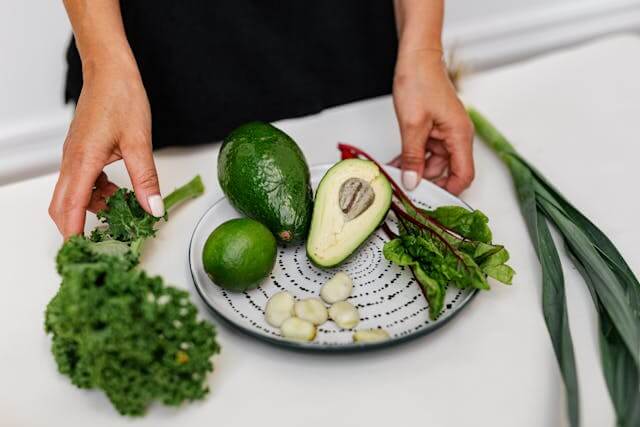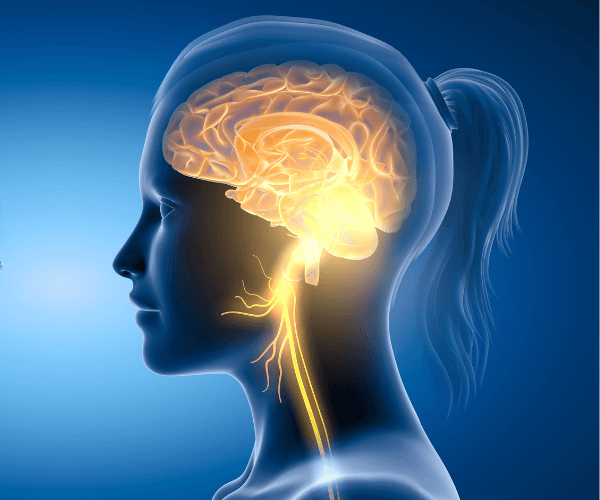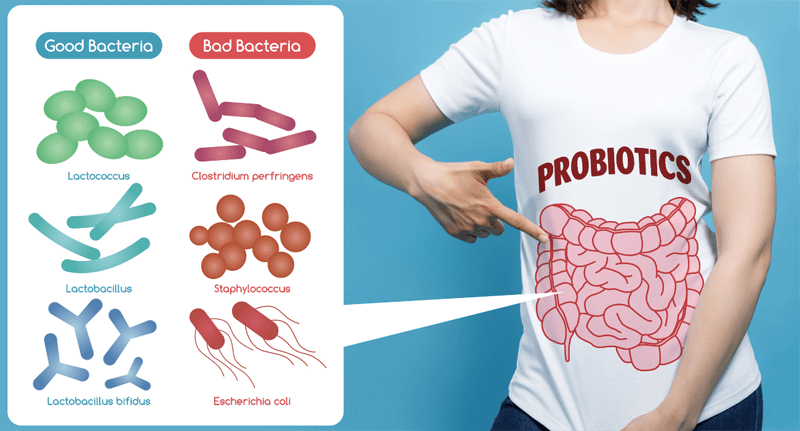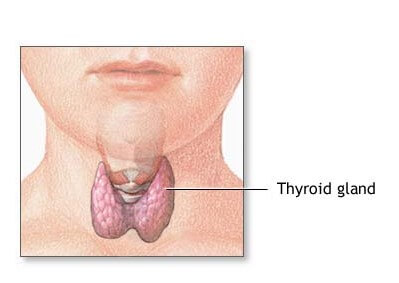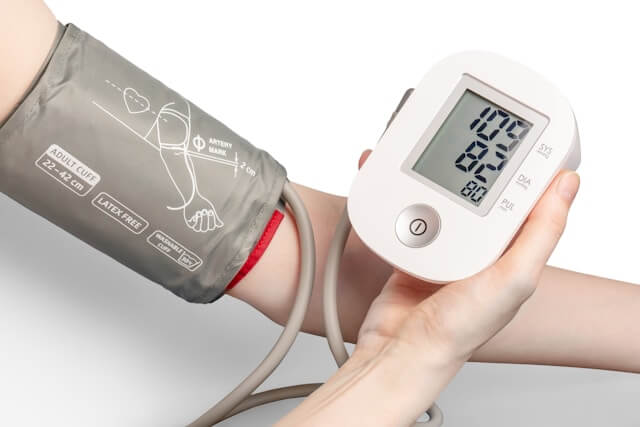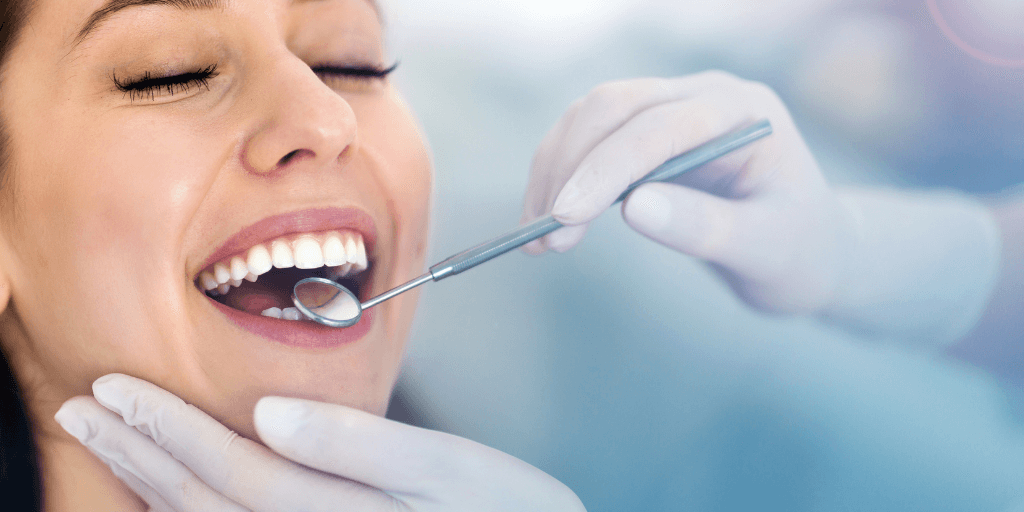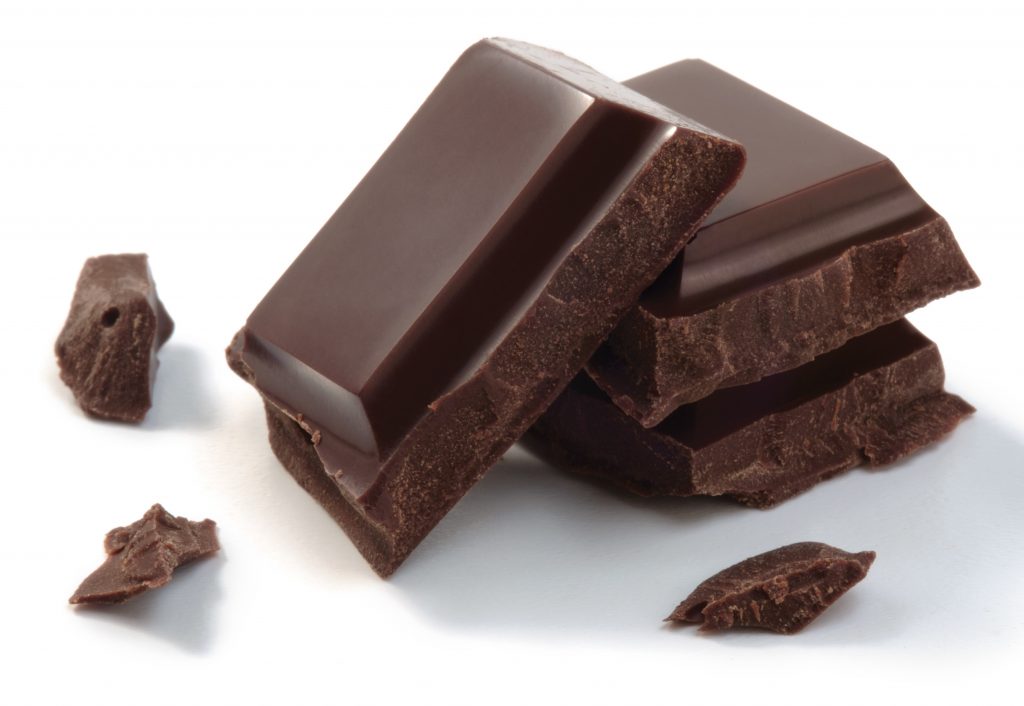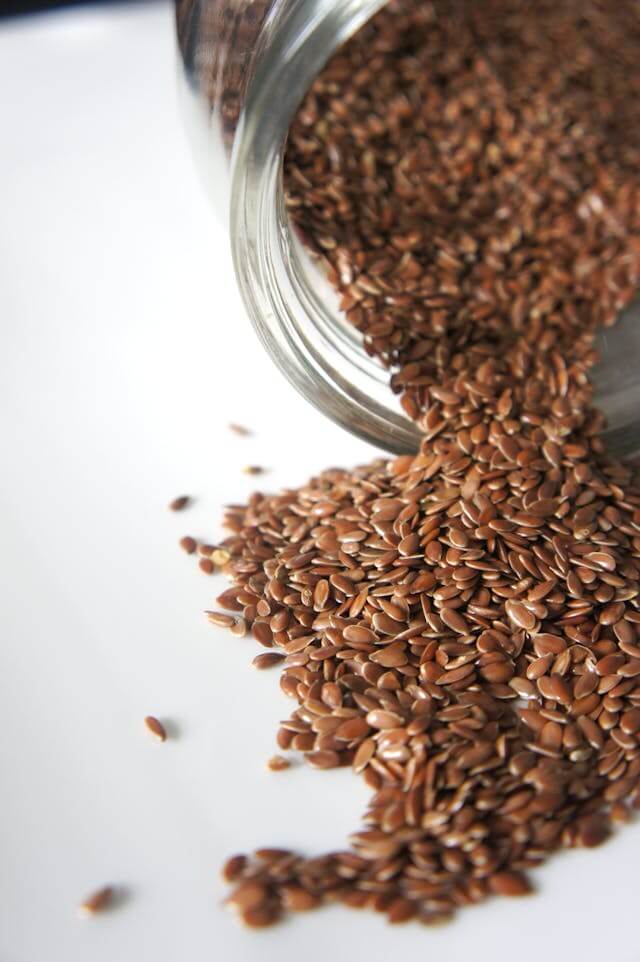Electrolyte drinks are everywhere these days—and for good reasons. They’re a quick way to replace electrolytes lost through sweat, exercise, or illness. But not all electrolyte drinks are created equal. Many are loaded with sugar, artificial sweeteners, colors, and other dodgy ingredients.
The good news is there are plenty of clean, high-quality options to help you stay hydrated. Keep reading for our top picks for the best electrolyte drinks to hydrate you—without the junk. But first, let’s break down why electrolytes matter in the first place.
What Do Electrolytes Do?
As the name suggests, electrolytes are minerals that send an electrical charge. And they play a crucial role in how your body functions. They help maintain fluid balance, regulate pH, support healthy muscles and nerves, and much more.1
There are seven main types of electrolytes—and each serves unique functions:
- Sodium: helps cells maintain fluid balance and absorb nutrients
- Potassium: works in tandem with sodium to regulate fluid balance, crucial for heart health and muscle movement
- Magnesium: helps convert nutrients into energy, supports healthy nerve and muscle function
- Calcium: essential for healthy bones and teeth, nerve signaling, heart health, and muscle function
- Phosphorus: helps metabolize nutrients, needed for healthy bones and teeth, helps form DNA
- Chloride: supports fluid balance and digestion
- Bicarbonate: helps keep pH levels balanced
As you can see, electrolytes do a lot for your body! So, when electrolyte levels get thrown off, many bodily processes suffer.
How to Tell If You Need Electrolytes
Anytime you break a sweat, whether it’s due to hot weather, intense workouts, or sauna sessions, you lose electrolytes. And those electrolytes need to be replenished. Otherwise, it can lead to mineral imbalances and disrupt many functions in your body. If electrolyte levels stay low for too long, your body may send some signals.
Signs of electrolyte imbalance include:
- Muscle cramps or spasms
- Fatigue or dizziness
- Headaches
- Feeling confused or agitated
- Irregular heartbeat
- Nausea or vomiting
- Tingling in fingers, toes, or limbs
If any of these symptoms ring a bell, your body may be calling for more electrolytes. Don’t worry, this article will give you loads of options! But first, let’s cover the electrolyte and migraine connection.
Electrolytes and Migraine: Why They’re Important
Electrolytes are essential for everyone—but they’re even more so if you suffer from migraines. Dehydration is a common migraine trigger, and electrolytes play a key role in keeping you hydrated.2 Hydration alone may not be enough for migraineurs. Drinking plain water without replenishing lost electrolytes can dilute electrolyte levels further.
Proper hydration with electrolyte-rich fluids is crucial for migraine prevention and management. Low electrolyte levels can disrupt fluid balance and nerve signaling, both crucial for migraine.
Magnesium is especially important, as low levels can increase the risk of migraines.3 In one study, people with low magnesium levels were 35 times more likely to experience migraine attacks!4
Electrolytes can also help with migraine recovery. Vomiting is a frequent migraine symptom, which can lead to dehydration and mineral imbalances. Keeping electrolyte drinks on hand helps replace lost fluids so you can recover faster. Just be sure to choose clean options free of artificial additives to avoid potential migraine triggers.
What Are Some Good Sources of Electrolytes?
Electrolytes can be found in many foods, like vegetables, nuts, and seeds. If you think you could use more electrolytes, try adding these high-electrolyte foods to the menu:
- Sodium: sea salt, olives, pickles, sauerkraut
- Potassium: bananas, avocados, salmon, potatoes, tomatoes, white beans
- Magnesium: spinach, pumpkin seeds, almonds, tuna, brown rice, dark chocolate
- Calcium: leafy greens, cheese, yogurt, milk, sardines, chia seeds, broccoli
- Phosphorus: salmon, scallops, dairy, lentils, cashews, chicken, beef
Electrolyte drinks, powders, and supplements are also handy for a quick hydration boost. However, not all electrolyte drinks are healthy. Many are packed with sugar or artificial ingredients that can do more harm than good. So, it pays to be choosy.
When choosing electrolyte drinks, check the label and watch out for:
- Added sugars: cane sugar, dextrose, glucose, sucrose, fructose, etc.
- Artificial colors: especially Red 40, Yellow 5, Yellow 6 & Green 3
- Artificial sweeteners: aspartame, sucralose & acesulfame potassium
- Fillers & additives: maltodextrin (can spike blood sugar)
For a healthy hydration boost, opt for brands that keep it simple—and avoid these unwanted extras.
The Best Electrolyte Drinks: Our Top 10 Picks
Here are our top picks for the healthiest electrolyte drinks, in no particular order. Each one is low in added sugars, and free of artificial colors, flavors, and sweeteners.
1 – Coconut water
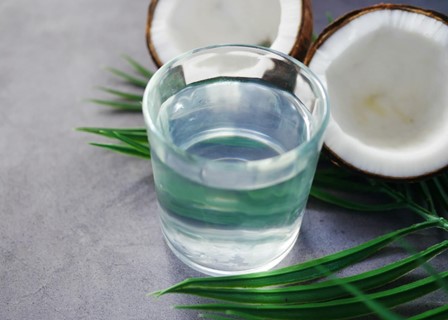
If you want a natural electrolytes boost, look no further than coconut water. This delicious drink is packed with electrolytes like sodium, magnesium, and especially potassium. Each cup boasts 600 mg of potassium, roughly 15% of the daily value (DV). It’s also vegan, gluten-free, and all-natural, so just about anyone can enjoy it.
While coconut water makes a great electrolyte drink, it does have its downsides. Namely, it’s high in natural sugars: each cup clocks in at 6-11 grams depending on the brand. So, while it’s a healthy way to up your electrolytes, it’s best to not overdo it. Be sure to opt for unsweetened varieties to avoid added sugars.
Coconut water nutrition facts
Serving size: one cup (8 oz)
- Calories per serving: 46 calories
- Sugar per serving: 6-10 grams
- Electrolytes per serving: 252 mg sodium, 600 mg potassium, 60 mg magnesium, 57.6 mg calcium & 46 mg phosphorus
- Pros: All-natural
- Cons: High levels of natural sugars
- Price: $4-6 per one liter carton
2 – Milk

Milk may be best known for its high calcium content. But it delivers loads of other electrolytes too, like sodium, calcium, potassium, and phosphorus. Milk is also rich in vitamin B12 and fortified with vitamin D.
That said, milk proteins can be hard to digest for some people. So, cow’s milk isn’t a good fit for everyone. Plant-based milks, like almond milk, offer some electrolytes. But they’re not as abundant as dairy milk. If you’re vegan, lactose intolerant, or avoid dairy, coconut water may be a better option.
Milk nutrition facts
Serving size: one cup of organic whole milk
- Calories per serving: 160 calories
- Sugar per serving: 12 g
- Electrolytes per serving: 135 mg sodium, 410 mg potassium, 310 mg calcium & 210 mg phosphorus
- Pros: inexpensive & readily available, high in vitamin D and B12
- Cons: hard to digest for some, high in calories, fat, and sugar
- Price: $5-7 per half gallon
3 – Bone broth

Want a savory way to replenish electrolytes? Sip on some bone broth. It’s rich in electrolytes like sodium, potassium, and calcium and boasts 9 grams of protein per cup! It’s also packed with nutrients like collagen, gelatin, glutamine, and glycine that support a healthy digestive system.
Bone broth is revitalizing on its own—but can also be used as a base for smoothies for an energizing, electrolyte-rich drink. Most people prefer it warmed up, but you can also consume it cold. For the best quality and taste, look for organic brands like Kettle and Fire when choosing bone broth.
Bone broth nutrition facts
Serving size: one 16.9 oz carton
- Calories per serving: 80 calories
- Sugar per serving: 0 g
- Electrolytes per serving: 620 mg sodium, 500 mg potassium, 50 mg calcium
- Pros: high in protein, supports gut health
- Cons: no magnesium, some people may not enjoy drinking it cold
- Price: $6.79 per carton (Kettle & Fire brand)
4 – LMNT electrolyte powder packets
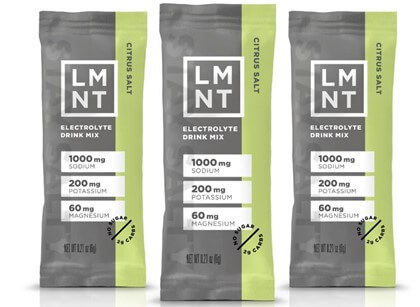
If you’re looking for a clean, portable option, these LMNT electrolyte powder packets may fit the bill. Each packet delivers a healthy dose of sodium, potassium, and magnesium to restore lost electrolytes. Simply add a packet to a glass or bottle of water for a quick hydration boost.
LMNT electrolyte drink mixes come in a variety of flavors, are sweetened with stevia, and contain no sugar or anything artificial. This brand is a favorite in the fitness world and an excellent choice for most people. However, it’s high in sodium—with 1,000 mg per packet. This can be helpful if you’re on the Keto diet or an endurance athlete. But it’s not ideal for people with high blood pressure or heart issues.
LMNT nutrition facts
Serving size: one packet
- Calories per serving: 10 calories
- Sugar per serving: 0 g
- Electrolytes per serving: 1,000 mg sodium, 200 mg potassium, 60 mg magnesium
- Pros: sugar free, good for vigorous exercise or heavy sweating
- Cons: not a good fit for anyone with high blood pressure or heart issues
- Price: $39 per 30-pack
5 – Liquid IV hydration multiplier (sugar-free)
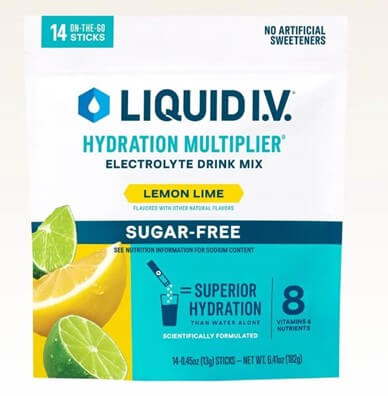
Liquid IV is another brand with a slew of electrolyte drink mixes. Each stick pack delivers a solid dose of sodium and potassium—but no magnesium. However, extras like vitamin C and B vitamins are also included.
That said, Liquid IV’s traditional formula is high in added sugars—with 11 grams per packet. This provides a quick energy source for endurance athletes or high-intensity workouts. But it’s not ideal for moderate exercise or daily wellness. Luckily they have a sugar-free formula sweetened with stevia. So, if you’re watching your sugar intake, this would be a better choice.
Liquid IV sugar-free nutrition facts
Serving size: 1 stick pack
- Calories per serving: 20 calories
- Sugar per serving: 0 g
- Electrolytes per serving: 530 mg sodium, 380 mg potassium
- Pros: has C and B vitamins
- Cons: no magnesium, pricey per serving
- Price: $25.99 for one pouch (14 sticks)
6 – Nuun electrolyte tablets
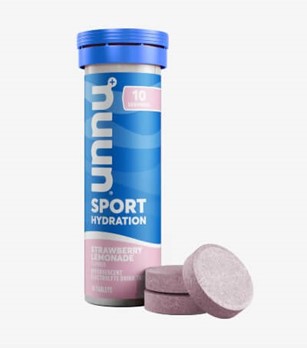
Nuun electrolyte tablets are another easy, on-the-go option. Each tablet delivers a mix of sodium, potassium, magnesium, chloride, and calcium. Simply drop a tablet into a bottle of water and let it fizz for a portable electrolyte drink.
Nuun is easy to tote around, making it a great choice for travel or busy lifestyles. Its main downfall? Some reviewers say it takes a few minutes to dissolve. And it does have some sugar—but only 1 gram per tablet.
Nuun electrolyte tablet nutrition facts
Serving size: 1 tablet
- Calories per serving: 15 calories
- Sugar per serving: 1 g
- Electrolytes per serving: 300 mg sodium, 150 mg potassium, 25 mg magnesium, 40 mg chloride, 13 mg calcium
- Pros: portable and convenient
- Cons: takes a few minutes to dissolve
- Price: $7.49 per 10 tablet tube
7 – Ultima electrolyte powder mix
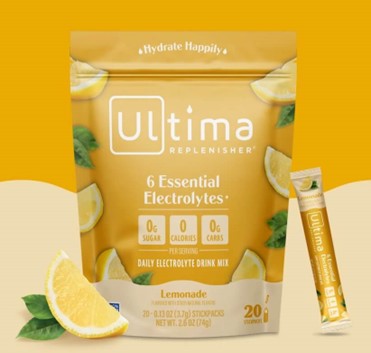
Ultima is another clean option if you’re on the hunt for an electrolytes boost. Each packet has a blend of six electrolytes, the most of any product on this list. Extras like vitamin C, zinc, and manganese are also included, which supports a healthy immune system.
Ultima is sugar-free and sweetened with stevia, just like LMNT. But it’s way lower in sodium–with only 55 mg per packet. This makes it a good choice if you have high blood pressure or are watching your sodium intake. But it may not be the best fit if you do prolonged or intense workouts that involve heavy sweating.
Ultima nutrition facts
Serving size: 1 stick pack
- Calories per serving: 0 calories
- Sugar per serving: 0 g
- Electrolytes per serving: 55 mg sodium, 250 mg potassium, 100 mg magnesium, 47 mg calcium, 78 mg chloride, 70 mg phosphorus
- Pros: has 6 electrolytes, zinc, vitamin C, & manganese
- Cons: not ideal for intense workouts or heavy sweating
- Price: $20.99 per 20 stick packs
8 – Keto Chow electrolyte drops
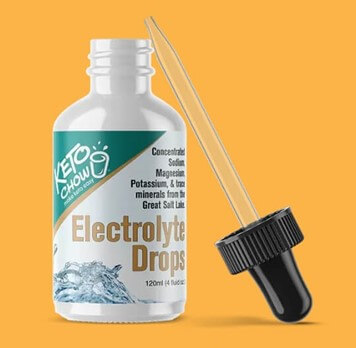
If you follow the Paleo or Keto diet, Keto Chow electrolyte drops may be a good choice. Each dropper provides sodium, potassium, magnesium, and chloride, along with trace minerals. Simply add to your water for a potent electrolyte boost in a highly bioavailable form.
The only drawback to these electrolyte drops is that some reviewers complain about the taste. But if you’re looking for an electrolyte supplement with zero sugar or calories, it may be worth a try.
Keto Chow electrolyte drops nutrition facts
Serving size: 1 teaspoon
- Calories per serving: 0 calories
- Sugar per serving: 0 g
- Electrolytes per serving: 255 mg sodium, 265 mg potassium, 90 mg magnesium, 790 mg chloride
- Pros: easily absorbed, zero sugar & calories
- Cons: some reviewers aren’t fans of the taste
- Price: $13 for 4-oz bottle
9 – Trace Minerals Zerolyte powder
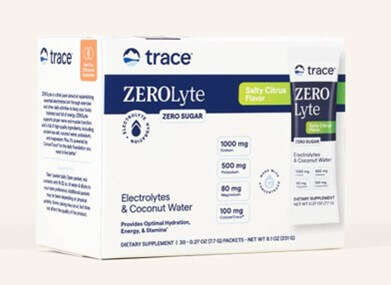
Trace Zerolyte electrolyte powder is a blend of ancient sea salt and powdered coconut water. Each packet offers a hefty dose of sodium, potassium, magnesium, and chloride, as well as trace minerals. It’s also sugar-free, sweetened with stevia, and extremely low-cal, with only 5 calories per packet.
The only catch is that Zerolyte is high in sodium. So, if you have high blood pressure, heart issues, or weak kidneys, you may want to skip this one. Otherwise, it’s a solid option.
Trace Zerolyte nutrition facts
Serving size: 1 packet
- Calories per serving: 5 calories
- Sugar per serving: 0 g
- Electrolytes per serving: 1,000 mg sodium, 500 mg potassium, 80 mg magnesium, 1,500 mg chloride
- Pros: naturally sourced, contains trace minerals
- Cons: high sodium content
- Price: $38 for 30 packets
10 – Gatorade Fit
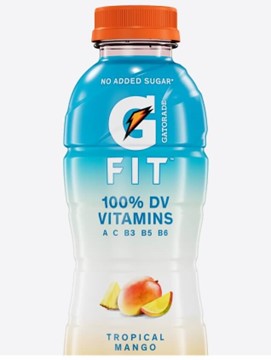
Surprised Gatorade made the list? We were too. But Gatorade Fit isn’t your typical sports drink. Unlike most sugary sports drinks, it’s free of artificial flavors, colors, or sweeteners. Instead, it’s naturally sweetened with stevia and watermelon juice.
Gatorade Fit’s main drawback is its insufficient amount of electrolytes. Each bottle only offers a modest dose of sodium and potassium. But it does include extras like vitamins A, C, and B. And it’s a much healthier alternative to typical sports drinks—so it deserves a shout-out.
Gatorade Fit nutrition facts
Serving size: one16.9 oz bottle
- Calories per serving: 10 calories
- Sugar per serving: 1 g
- Electrolytes per serving: 230 mg sodium, 30 mg potassium
- Pros: naturally sweetened, healthy alternative to typical sports drinks
- Cons: low electrolyte content, no magnesium
- Price: $22.79 for 12 bottles
Takeaways
Electrolytes are a must to stay hydrated, support muscles, and keep your body balanced. Some foods like sea salt, leafy greens, and nuts are natural sources of electrolytes. However, sometimes you need a boost, especially if you’re breaking a sweat or ill. That’s where electrolyte drinks can help, but it’s important to choose wisely. Skip the added sugars and artificial junk, and opt for clean, high-quality options—like the ones on this list.
Sources:
- Electrolytes | StatsPearls NIH
- Association of Drinking Water and Migraine Headache Severity | PubMed
- Magnesium and Migraine | MDPI
- Serum Concentration of Magnesium as an Independent Risk Factor in Migraine Attacks | International Clinical Psychopharmacology
- Coconut Water | USDA












